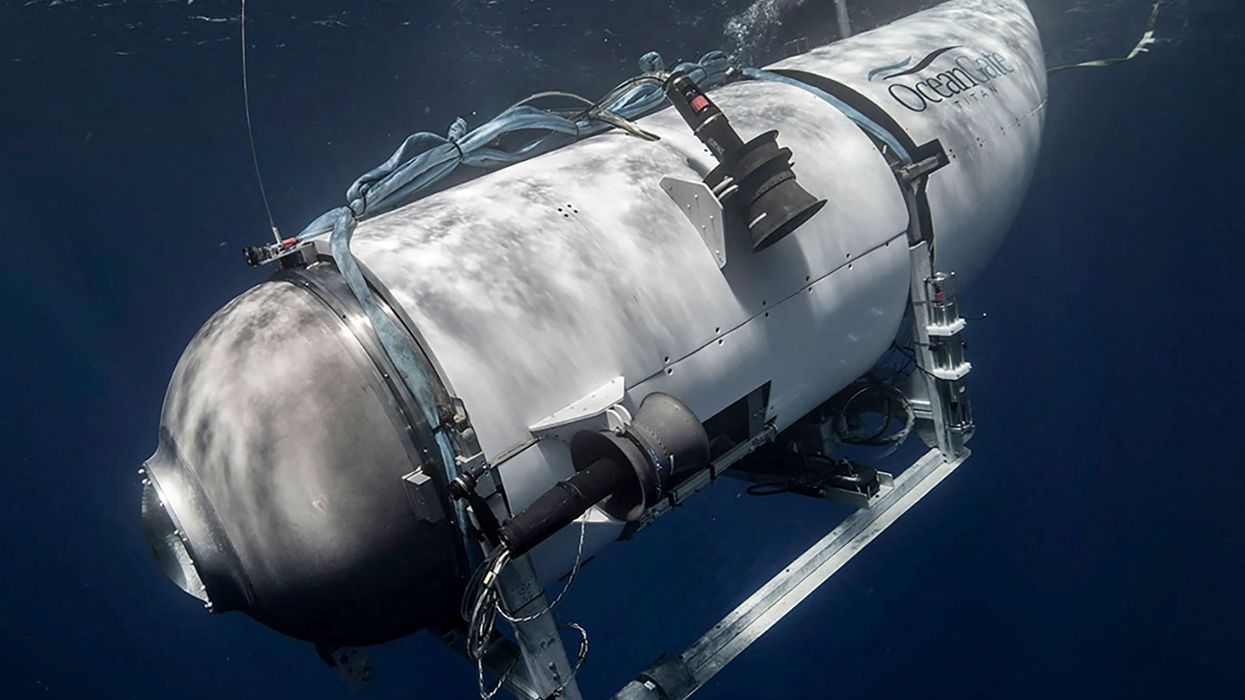Alex Daniel
Jul 03, 2023
Titanic submarine: What happened?
content.jwplatform.com
The doomed Titan submarine’s implosion would have happened so fast that the five people onboard who were killed “never knew it happened,” according to an expert.
Tributes have been paid for the men killed on the submersible after search and rescue teams found debris from the OceanGate Expeditions vessel on 22 June.
The victims were Hamish Harding, 58, Shahzada Dawood, 48, and his son Suleman Dawood, 19, Paul-Henri Nargeolet, 77, and Stockton Rush, 61.
Sign up to our free Indy100 weekly newsletter
US officials said they died in a “catastrophic implosion” sometime after the craft lost contact with the surface one hour and 45 minutes into its dive to the wreck of the Titanic on Sunday.
When communication failed, the vessel would have been a little less than 10,000 feet below the surface, experts told the New York Post, at which point the enormous water pressure would have meant any weakness or crack in the submarine would cause it to instantly implode.
Expert Ofer Ketter said the implosion would have occurred within a millisecond, if not a nanosecond, if something breached the hull of the vessel to cause a loss in pressure.
“They never knew it happened,” he said of the five victims. “Which is actually very positive in this very negative situation.”
“It was instantaneous — before even their brain could even send a type of message to their body that they’re having pain,” Ketter, who is the co-founder of a private submersible company called Sub-Merge.
Pressure that far beneath the water’s surface is around 6,000 pounds per square inch, which the carbon fibre and titanium hull of the Titan was designed to hold.
Dr. Peter Girguis, an oceanographer and Harvard University professor, said: “When a scuba tank is overfilled there’s a safety device that releases gas very quickly. At least that’s the plan.”
“When you take the equivalent of a scuba tank and you want it to hold the pressure out, it’s a different story, because if you go beyond the strength of the vessel then it crushes or collapses.”
He added: “We tend to believe [the implosions] are swift and they tend to be complete, but I want to emphasise again, we don’t exactly know.”
Girguis said submersibles and other such vessels or devices are subjected to pressure tests. They are often required to withstand more pressure than they will likely face to be considered safe.
“So if you’re doing work at a given depth, you have to design it so it can withstand at least 1.5 or two times depending on the nation, the policy, etc,” Giguis said. “We build in those safety factors, then we test it … often up to 10 times.”
The investigation into what caused the sub to implode is ongoing. There is no evidence suggesting OceanGate is at fault, and a conclusion may never be reached.
However, Ketter said implosions “shouldn’t happen, because we know how to build submersibles for them not to implode.
“So, when do implosions happen? To be honest and to be frank, when the engineering is wrong in its calculations.
“When either the structure, the material, the testing, the seals – any other part of the submersible that was designed to go to that depth – was designed wrong and didn’t withstand the pressures that it was designed to.”
Have your say in our news democracy. Click the upvote icon at the top of the page to help raise this article through the indy100 rankings.
Top 100
The Conversation (0)














